At the end of the 20th century, the Indian rhino was threatened with extinction. Through consistent protection of habitats, the stock has recovered significantly. And the pandemic caused a veritable baby boom.
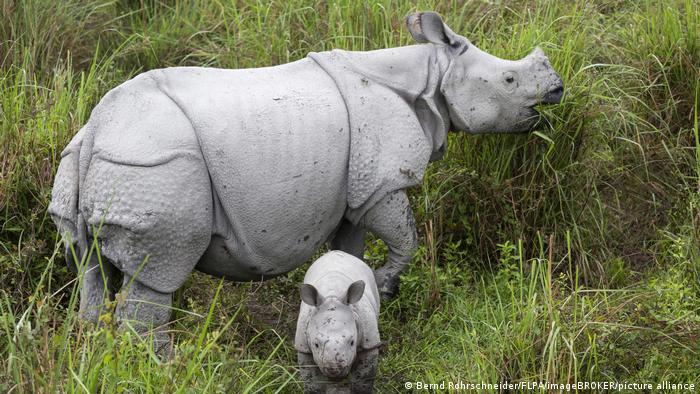
The stock is recovering: The strict protective measures have obviously paid off
It is a success story that gives hope: the almost extinct Indian rhinoceros has been saved for the time being, and the population has reached a new record high. At the end of the 20th century there were fewer than 100 individuals worldwide, according to the International Rhinoceros Foundation there are now more than 4000 Indian rhinos living in the wild again.
This was shown by a census commissioned by the government of the eastern Indian province of Assam, where 70 percent of the world's free-roaming Indian rhinos can be found. But the stocks in Nepal, the only country besides India with free-living Indian rhinos, have recovered significantly, there 274 animals were newly recorded compared to the previous year.
Consistent protective measures
The strict protective measures have obviously paid off. The protection programs were also financed by private donations and support from the International Rhino Foundation, for example. On the one hand, the protected habitats for Indian rhinos have been significantly expanded. The Assam government alone expanded the protection zone from 430 to 1,040 square kilometers. The Orang National Park in India will also be expanded by a further 200 square kilometers. On the other hand, the penalties for poachers have been significantly tightened.
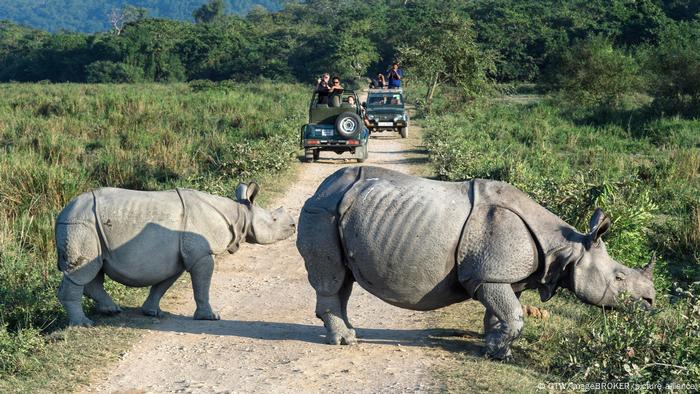
The lack of tourists during the pandemic caused a baby boom
The fact that the stocks have now recovered so remarkably is also due to the corona pandemic: Many of the protected areas were completely closed. And this tranquility led to a significant baby boom among the one-horned rhinos.
Still endangered species
Despite the encouraging figures, the World Conservation Organization IUCN still classifies the one-horned rhino as an endangered species. Because despite the tightened hunting is still very lucrative for poachers.
The animal's rhinoceros horn is a coveted part of traditional Asian medicine and is sometimes worth more than gold – even if trading in the horn substance is internationally banned. Unlike its African relative, the Indian rhino has a single horn that can grow up to 50 centimeters long and is made of keratin.
Weighty and fast
After the elephant and the White rhino, the Indian Indian rhinoceros is the third largest land mammal on earth. It reaches a maximum age of around 40 years.
Watch the video 28:31
The last of their kind – fight for Africa's rhinos
A full-grown bull can weigh almost two tons and is over three meters long. Indian rhinos feed mainly on grass, but also on reeds and bamboo. Despite their enormous body mass, Indian rhinos can reach speeds of up to 60 kilometers per hour. Your enormous weight is cushioned by soft sole cushions; the wide feet prevent sinking into the soft ground.
Marked Skin
Although the skin of the Indian rhino is very thick, it is not really a shell, as its name suggests. Often the skin is marked by territorial fights with fellow animals, in fights the animals use their long incisors in addition to their horns.
Fights mainly occur during the mating season, because only then do the nocturnal loners meet their fellows. An Indian rhinoceros cow only gives birth every three years – after a gestation period of around one and a half years – a young that weighs around 70 kilograms at birth and is raised by the cow alone.
-
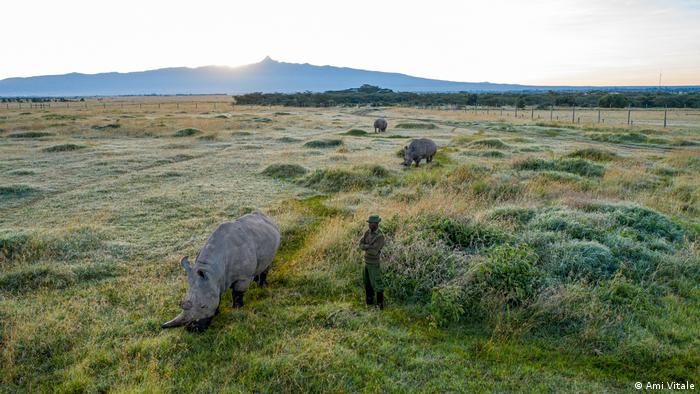 New hope for the northern white rhinoceros
New hope for the northern white rhinoceros
Idyllic treacherous
Here the two female northern white rhinos Najin (front) and Fatu (middle) graze, with southern white rhino Tauwo in the background. But the idyll in the Kenyan nature reserve is deceptive: Najin and Fatu are the last of their kind. Only science and medicine can save the extinct species from dying out completely.
-
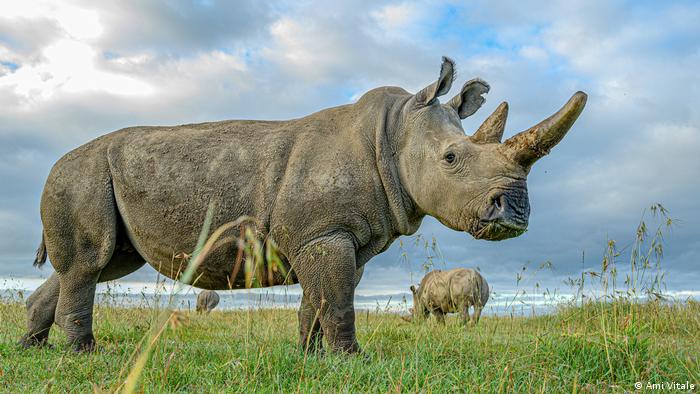 New hope for the northern white rhino
New hope for the northern white rhino
Exterminated by poachers
These imposing northern white rhinos used to live in large numbers in east and central Africa. However, poachers decimated the entire stock. They have been extinct in the wild since 2008. In 2018, the last living male named Sudan had to be euthanized due to old age.
-
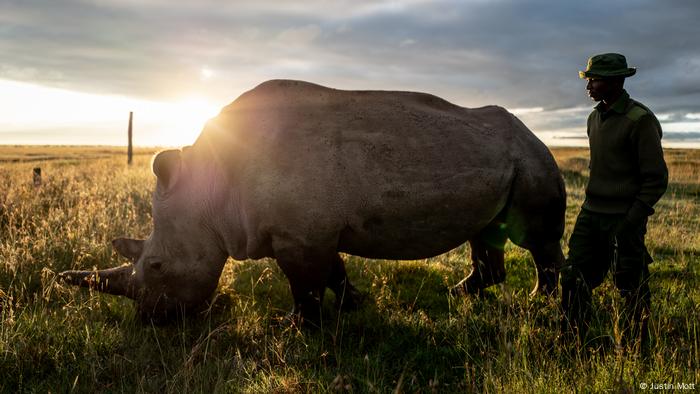 New hope for the northern white rhino
New hope for the northern white rhino
Successful premiere
In August 2019, scientists – including some from Germany – were able to remove a total of ten egg cells from the two female rhinos, Najin and Fatu, in a unique procedure. Italian experts artificially inseminated them with frozen sperm from the deceased male. This allowed them to create two viable embryos in the lab.
-
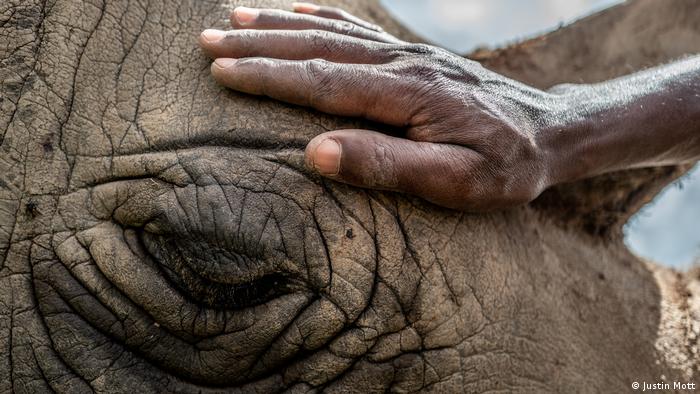 New hope for the northern white rhino
New hope for the northern white rhino
We protect You!
The procedure proved to be safe and reproducible. The vets repeated the procedure in mid-December. They were able to create another embryo, which significantly increases the chances of a successful offspring. The time for egg retrieval was pressing, because the females are no longer the youngest.
-
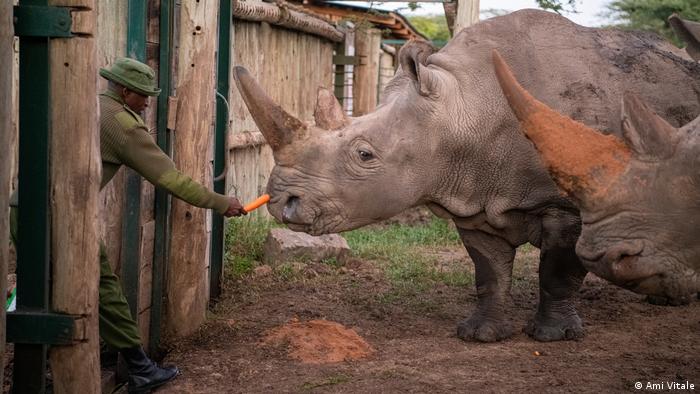 New hope for the northern white rhino
New hope for the northern white rhino
Close bond
The guards and orderlies have developed a very close relationship with Najin and Fatu. Before the egg cell retrieval and the necessary separation of the two, her caretaker Zacharia Mutai comforts the two with small treats. In the zoo, a rhino eats 50 kg of hay, 5 kg of oats, 3 kg of pellets, 2 kg of carrots and 1 kg of apples every day.
-
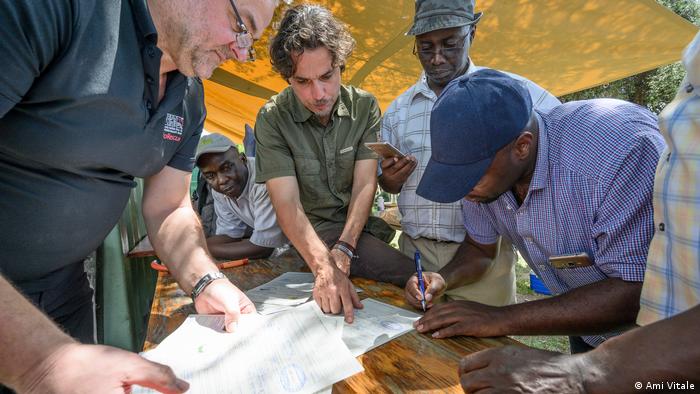 New hope for the northern white rhino
New hope for the northern white rhino
Not only medical hurdles
The rescue operation was made possible by international cooperation, in which not only the veterinary challenges but also numerous bureaucratic hurdles had to be overcome in the egg export and the procedure. Jan Stejskal from the zoo in Dvůr Králové in the Czech Republic and Frank Göritz from Leibniz-IZW (left) complete the required permits here.
-
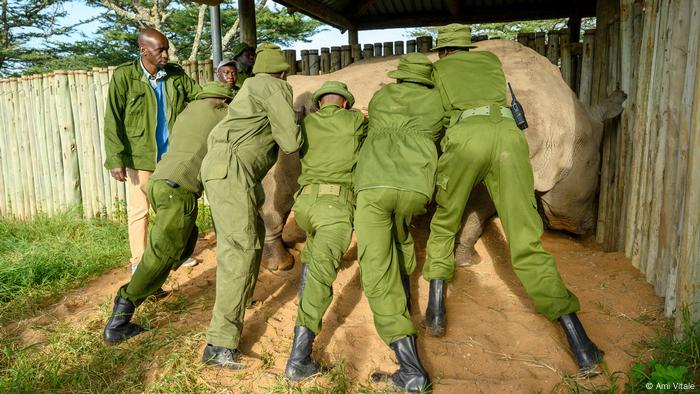 New hope for the northern white rhino
New hope for the northern white rhino
Accurate hard work
After the sedatives were administered, guards and orderlies worked hand-in-hand to ensure an ideal position for the procedure. The delicate procedure was tested on females of the related southern white rhinoceros. There are still around 20,000 of them.
-
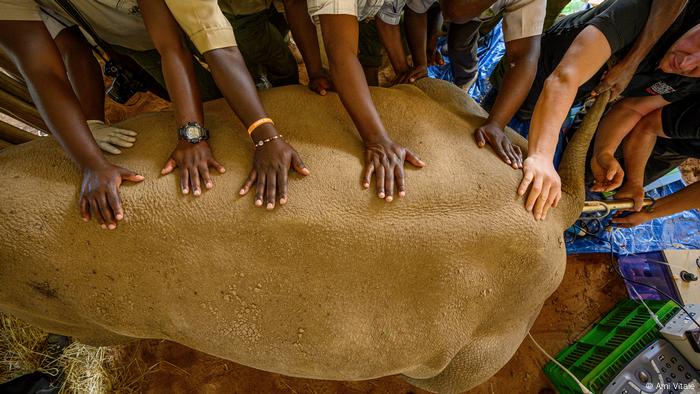 New hope for the northern white rhino
New hope for the northern white rhino
Let's grab it!
Many hands are needed – from researchers, veterinarians and nurses. The veterinary team carefully monitors the animals after sedation so that the vital procedure can begin without risk to the animals.
-
 New hope for the northern white rhino
New hope for the northern white rhino
Routine intervention
The researchers performed the egg retrieval using a specially designed probe under ultrasound guidance. Anesthesia and egg retrieval went smoothly and without complications. The delicate procedure has already been successful twice with Najin and Fatu. As previously for southern white rhinos in European zoos several dozen times by the BioRescue team.
-
 New hope for the northern white rhino
New hope for the northern white rhino
Scrutiny
BioRescue project manager Prof. Thomas Hildebrandt (Leibniz-IZW) inspects the collected ovarian fluid in order to separate the valuable egg cells that are to be fertilized in the laboratory of the specialist company Avantea in Cremona, Italy.
-
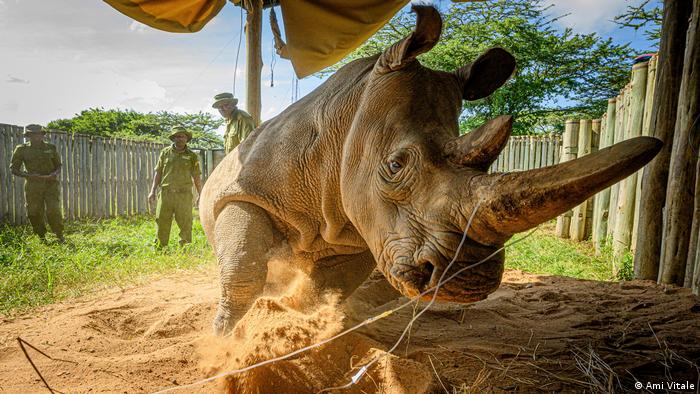 New hope for the northern white rhino
New hope for the northern white rhino
Everything went well
After the procedure is finished, Najin is brought out of the sedation and slowly begins to stand up. The rhino cow survived the anesthesia and egg cell retrieval well.
-
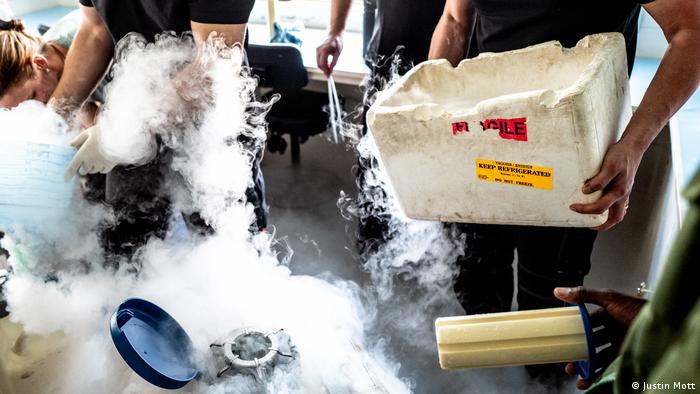 New hope for the northern white rhino
New hope for the northern white rhino
Seed transport to Germany
In addition to the oocyte retrieval, the semen of the last male northern white rhino was also prepared for transport from Kenya to Germany. The sperm arrived safely in special transport containers filled with liquid nitrogen at the Leibniz-IZW, where its usability for future in vitro embryos is being examined.
-
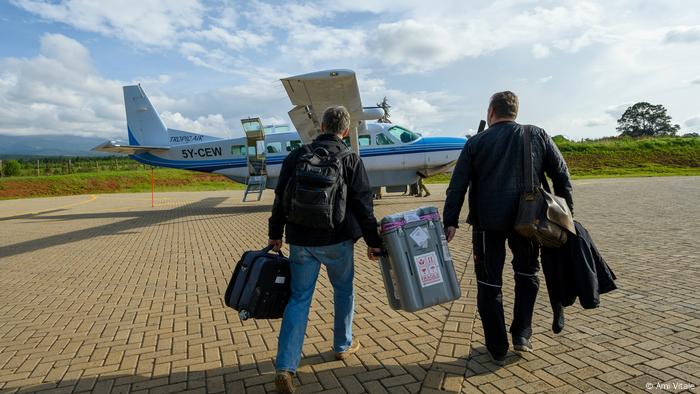 New hope for the northern white rhinoceros
New hope for the northern white rhinoceros
Hurry up now!
The extracted egg cells and the deep-frozen semen samples had to be sent out in a very short time Kenya to be flown to Europe. Prof. Thomas Hildebrandt and Dr. Frank Göritz, both from the Leibniz Institute for Zoo and Wildlife Research, carry the valuable transport container to the aircraft.
-
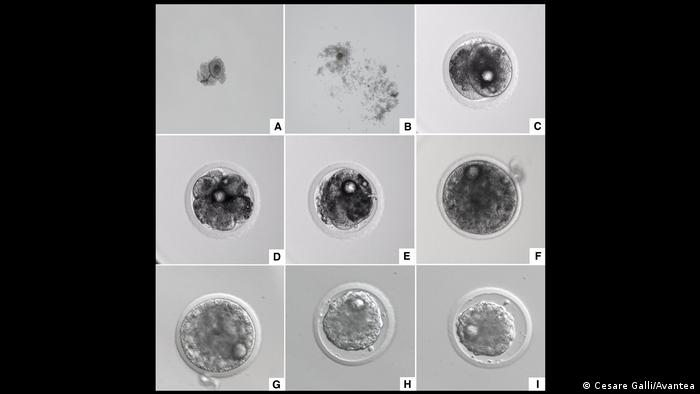 New hope for the northern white rhino
New hope for the northern white rhino
To Italy for fertilization
The precious eggs were artificially fertilized in the Italian laboratory. The semen used has been preserved in liquid nitrogen for years. Here the development process of the newly formed embryo in the Geri incubator.
-
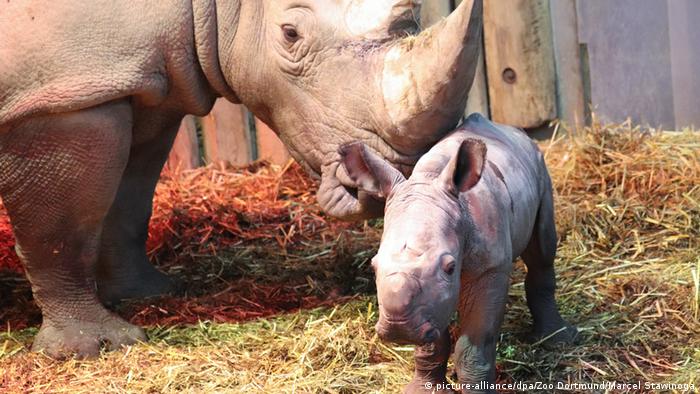 New hope for the northern white rhino
New hope for the northern white rhino
Hope for the future
In the next few months, the egg cells of a southern white rhino cow are to be implanted – like this one with her young. She is then to carry a northern white rhino as a surrogate mother. So there is still hope that northern white rhinos will not disappear completely from our planet.
Author: Alexander Freund


 New hope for the northern white rhinoceros
New hope for the northern white rhinoceros New hope for the northern white rhino
New hope for the northern white rhino New hope for the northern white rhino
New hope for the northern white rhino New hope for the northern white rhino
New hope for the northern white rhino New hope for the northern white rhino
New hope for the northern white rhino New hope for the northern white rhino
New hope for the northern white rhino New hope for the northern white rhino
New hope for the northern white rhino New hope for the northern white rhino
New hope for the northern white rhino New hope for the northern white rhino
New hope for the northern white rhino New hope for the northern white rhino
New hope for the northern white rhino New hope for the northern white rhino
New hope for the northern white rhino New hope for the northern white rhino
New hope for the northern white rhino New hope for the northern white rhinoceros
New hope for the northern white rhinoceros New hope for the northern white rhino
New hope for the northern white rhino New hope for the northern white rhino
New hope for the northern white rhino